Best Coffee For French Press?
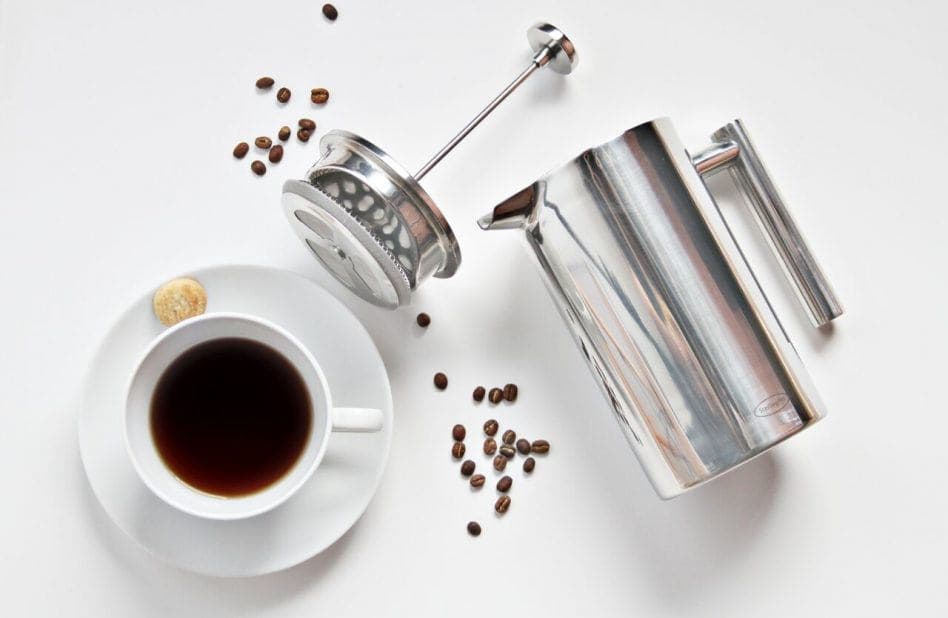
“Cup of coffee next to French Press” by Your Best Digs, via Flickr (CC BY 2.0)
French press coffee is one of the easiest and best ways to make coffee at home. But, what is the Best Coffee for French Press? What characteristics of coffee make it ideal for use with a French Press?
There are many ways to brew coffee. Aside from the traditional drip coffee, French press coffee is the easiest coffee to make at home.
Do You Want the BEST Coffee to Use With a French Press?
What you might not know is that using the French press brings out the best flavor from the coffee grinds you choose to use. And, I’m talking a night and day difference in taste when compared to your typical drip or automatic coffee maker.
What Makes a Coffee Bean Good for a French Press?
Too know what might be the Best Coffee for French Press usage, you should look at the following characteristics:
- Can create grinds that are not too fine or too coarse
- Darker Roast
- Oily can gum up the works!
- Bitter coffee when made using other methods
Well, that’s just one subjective list! True. But, I have my reasons.
Let’s get into each of these traits one by one and hopefully you’ll see why coffee like this is the best coffee for French Press use.
This Grind is Too Fine, This Grind is Too Coarse, This Grind is Just Right…
When you work your French Press, what I’ve found is that the coarseness of the grind affects how well the French Press works.
When the grind is too fine, grinds leak through the press filter. They can also get caught up between the press filter and the side of the French Press.
So, too fine means the press just isn’t able to do it’s job right. The press either is too difficult to press down. And, no body wants a cup of coffee where you are picking out tiny grinds out of your mouth.
Dark Roast Just Works Best
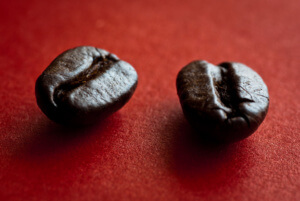
“Dark roast” by Charles Nadeau, via Flickr (CC BY 2.0)
This is, of course, a very subjective trait when picking the Best Coffee for French Press. But, I’m going to stick to my guns with this one.
If you are reading this and you don’t like dark roasted coffee, this is where the French Press shines.
Most opinions that are negative about dark roast have to do with how bitter the coffee tastes when it’s roasted too much.
But, what I’ve found, is if you have a bag of coffee that you tried, but it was just too bitter. You should give it another try using a French Press.
One of the amazing features of brewing using a French Press is how it takes what many consider to be a bitter coffee and brews the bitterness right out of the cup. Many of my friends don’t believe me. But, I’ve put them to the test, and they have all come out of the test being true converts.
Oily Gums up the Works!
This is a tricky trait to manage. I just talked about how dark roast is best. And, for me, that is true.
But, the longer a coffee bean is roasted, the more oil is released from the bean.
The problem with the oil and the French Press is that oily beans when ground can become clumpy. A clumpy grind just mucks up the works with the press filter.
While this can be a problem, it can also be managed. More water can help break up an oily clump of grinds. A little extra stir or five can also break up the clumps.
And, it’s not always obvious with the level of oiliness that it will be a problem until you give it a try.
Bitter is Better?
Well, of course not. You don’t want a bitter cup of coffee.
But, that’s the beauty of the French Press. What might normally be a coffee bean that you just can’t handle because it’s just too bitter, might be an incredibly complex and rich cup by just changing to a French Press.
So, for me, a darker more bitter coffee is the best coffee for French Press because it improves the most when used with a French Press.
Just What is a French Press?
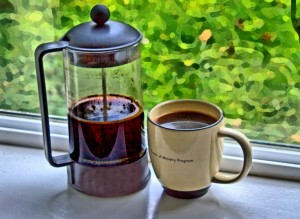
“French Press” by Andrew E. Larsen, Flickr (CC BY-ND 2.0)
With only six steps between waking up and drinking a fresh cup of French press coffee, this technique is one of the easiest ways to wake up in the morning.
So first of all, what is a French press?
The first coffee press was just a metal screen fitted to a rod to just press into a pot of boiling water.
Its popularity grew and spread throughout Europe, and now it is popular among American kitchens.
The modern French press, which is seen here, is a glass pot with a top that includes a plunger that allows for the coffee grounds to be pushed to the bottom. With a pouring spout and a handle, once the grinds are pressed down, you just pour the grindless coffee into your cup.
Different Types of French Press
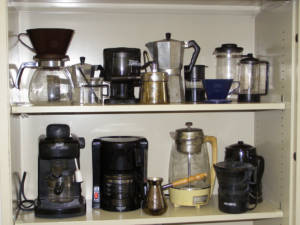
“For the love of coffee” by Lotzman Katzman Flickr (CC BY 2.0)
There are also several different versions of the French press, including travel mug versions. They often are made of tough plastic and sealed with a drinking hole that closes. These versions are ideal for hikers and backpackers, and insulated versions are similar in design to a thermos.
There is also a version that has shutters that can close and shut off the coffee grounds from the coffee entirely. And although the French press is mainly for brewing fresh hot coffee, it can also brew iced or cold coffee.
One of the best parts about using a French press is that it allows the coffee drinker to experience and choose just how dark they want their coffee. The longer you let the coffee grounds sit in the water, the stronger and the darker their coffee will get.
If you don’t want a darker coffee, then let the grounds sit and soak for a little bit of time and then filter them out.
In addition, the French press method allows you to get the wonderful strength of a good cup of coffee without all the bitterness that usually comes with it. This is the key advantage to using this method.
So how does a French press work?
As I previously mentioned, there are six steps to French press coffee. If you need a more visual explanation of these six steps, here’s a video to help you understand how to properly brew a nice cup of coffee using a French press:
httpv://www.youtube.com/watch?v=w3A_Z1J78HY
Step 1: Boil Some Water
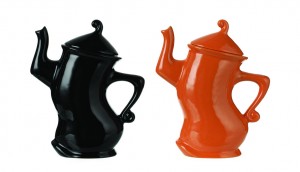
“Ganz Recalls Dancing Teapots” by US CPSC, Flickr (CC BY 2.0)
Whether it be in an electric kettle, in a teapot over an electric stove, or over a fire pit in the backyard, boil up some water to use for your hot coffee.
If you don’t want hot coffee and would rather cold coffee, then chill some water instead.
Or, add some crushed ice in with the coffee grounds. The press will filter the ice out leaving you with a nicely chilled cup of joe.
The perfect temperature for the boiling water is at about two minutes after boiling and is 195-205 degrees Fahrenheit.
Step 2: Warm Up Your French Press and Mug (optional)
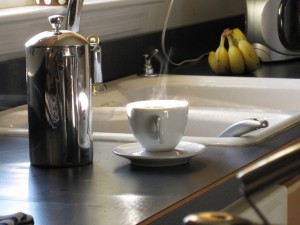
“French Press Coffee” by Kricket, Flickr (CC BY-ND 2.0)
Once your water is nice and hot, pour a little into your French press and your mug.
This will warm the French press up. And, it will warm your mug up from the room temperature it achieved while sitting in your cabinet.
Warming the mug is optional if you are in a hurry. But, is a nice touch for a nice weekend cup where you are just wanting to enjoy a lazy morning.
This step is especially nice on a brisk fall or early spring morning.
Step 3: Grind Your Coffee
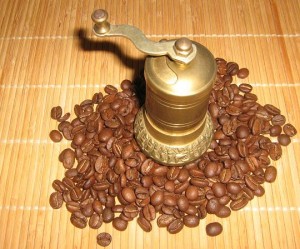
“vintage-coffee-grinder (own photo)” by crstnblue, Flickr (CC BY-ND 2.0)
While your boiling hot water is cooling. And, your mug and French press are warming up. You should go ahead and grind up your coffee.
Most people recommend that you use a medium coarse grind for the French press and I agree.
There’s nothing like trying to push that plunger down and coffee grounds just bleeding through into the coffee.
I also highly recommend a Burr coffee grinder for the French press because it grinds to a medium coarse grind. Also, a burr grinder brings out the flavor of your coffee bean of choice.
Grinders that chop or slice your coffee bean often don’t leave grinds in a state that where they bring out the coffee bean’s maximum flavor.
Many people also recommend that you add seven scoops of grounds for a 32 oz. press or three and a half scoops of grounds if you are using a 16 oz. press.
For the best coffee, I recommend that you choose the best coffee on the coffee bean menu and grind up the coffee beans right before you brew.
Step 4: Pour the Grinds into the French Press
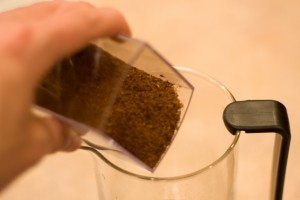
“Pour Grinds into French Press” by Michael Allen Smith, Flickr (CC BY-SA 2.0)
After you’ve measured out your seven scoops of grinds, pour them into the French press.
This might be the easiest step in the whole process.
If you already have water in your French press, you might want to use a spoon to gently mix the grounds into the water.
For those of you that prefer a stronger cup of coffee, a few extra strokes with a spoon can go a long way to truly saturate the water with the grinds.
If you prefer a less stiff or lighter brew, then just make sure you only get the grinds a little wet.
Step 5: Pour Water into the French Press
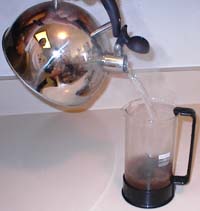
“Add Water to French Press” by Michael Allen Smith, Flickr (CC BY-SA 2.0)
About two minutes after the water stops boiling, fill the press halfway with water, so that all of the coffee grounds are wet.
If the coffee bubbles up, then you know that the coffee grounds/beans are fresh!
Then after one minute, put the rest of the water into the press, filling it to the brim.
Put the top on the press and let it sit for about three minutes for decently strong coffee.
Of course, you can alter the time it sits to change the strength of the coffee.
The stronger you want it, the longer you should let it sit. If you prefer weaker coffee, only let it sit for a couple of minutes.
Step 6: Push the Plunger Down to the Bottom
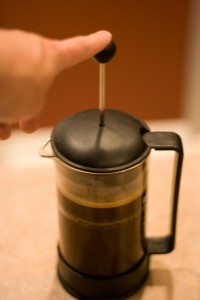
“Brew French Press” by Michael Allen Smith, Flickr (CC BY-SA 2.0)
After you have poured the grounds into the press, give them a swirl with your spoon or straw. After mixing the grounds up, let the coffee sit for a couple of minutes, just to let the sediment settle.
You don’t want to be drinking grounds should have been filtered out!
I let the coffee sit during this step for 4 minutes. Start there and play with this time until you get the strength you are looking for.
After you’ve let the coffee sit for a few minutes, you push the plunger filter down through the coffee, pushing the coffee grounds to the bottom of the press and separating the grounds from the rest of the coffee.
If at any point, it gets stuck, just pull up on the plunger and give it another try.
Once this has been achieved, you are ready to pour out your freshly brewed French press coffee!
If you don’t plan on drinking the entire French press container of coffee, it is a good idea to go ahead and pour the remaining coffee into a separate carafe.
This keeps the remaining coffee from getting stronger as it sits there in the coffee grounds.
Bonus Step 7: Pour Your Coffee and Enjoy it!
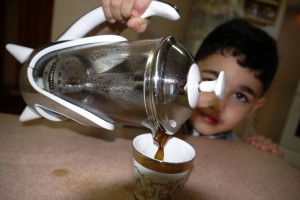
“Fresnch press coffee” by marviikad, Flickr (CC BY-SA 2.0)
Bonus step!
Simply pour out your coffee from the press into your cup and enjoy it!
Now, just who is this kid pouring his own cup of coffee?
He hardly looks strong enough to even hold the pitcher.
And, just who are his parents making him pour his own cup before he heads off for a long day at work?
He must be an incredible worker between his 7 year old energy combined with a strong cup of caffeine!
Our Top Choices for Best Coffee for French Press
Earlier in this article, we provided the traits to look for when choosing a great coffee to use with a French Press.
These are our Best Coffee for French Press winners!
Café Don Pedro American Roast

[wpi_designer_button text='PURCHASE' link='/internal/CaféDonPedroAmericanRoast' style_id='586' icon='digg' target='_blank']
But, with that small set, they stay focused on quality.
For Café Don Pedro American Roast, quality means coffee beans from Central America. Many agree that coffee beans from this region is among the best in the world.
This coffee bean make the Best Coffee for French Press list despite it being an American roast.
American roast is a medium roast. And, is towards the lighter side of medium. So, this isn’t the case of taking a bitter coffee bean and making it better.
Instead, this is taking a complex coffee bean and bringing out the full taste of Central American coffee bean. This is the best of the best bean grown in the best of the best region. So, using what we consider the best brewing method with the highest quality coffee bean is just difficult to beat.
Valhalla Java Whole Bean Coffee by Death Wish

[wpi_designer_button text='PURCHASE' link='/internal/DeathWishValhallaJavaWholeBeanCoffee' style_id='586' icon='digg' target='_blank']
Being the best coffee bean on our site and meeting all of the traits that the Best Coffee for French Press product needs to meet, this was a no brainer.
But, thus far, nothing really compares.
Valhalla Java Whole Bean Coffee by Death Wish is just one smooth cup of coffee. And, when you combine that with the wonderfulness of French Press, it just doesn’t get any better.
If you don’t believe me, just look at the reviews on Amazon. Almost 1,500 reviews (those that bothered to respond). And, the percentage of 5 star reviews is just higher than you ever see for a food product.
We were very suspicious of such a high number of positive reviews. But, we ran this product through Fakespot, and they give the quality of the reviews a grade of ‘A’.
Anyway, this is a dark roast. It does have some amount of oil, but isn’t too oily for French roast brewing.
The bean has vanilla and chocolate notes. Two of my all time favorite flavors coming together in a symphony of taste!
Sorry for the hyperbole, but this coffee is just amazing.
Wrap Up: Best Coffee for French Press
The biggest up side to French press coffee is that you get all the strength of a wonderful cup without the bitterness.
Do You Want the BEST Coffee to Use With a French Press?
So whether you enjoy your bitter-free coffee with creamer or flavors, or inside or out on the terrace, enjoy it! So, we believe that if you choose one of our featured Best Coffee for French Press products, and adopt using a French Press in the morning, your choice will be a life changer.
2 Responses to “Best Coffee For French Press?”
Sorry, the comment form is closed at this time.
I use Community Coffee in my French Press and LOVE it! I received Death Wish Valhalla for my birthday and was blown away by how smooth it is for such a dark and powerful roast.
I’m not sure I can afford to make Valhalla my every day cup. But, I’ll definitely be “hinting” to all of my family about what I want for Christmas this year!
Brett,
Thank you for your feedback. Valhalla is our favorite bean on this site. So, I’m not surprised that you like it.
Regards,
Emily